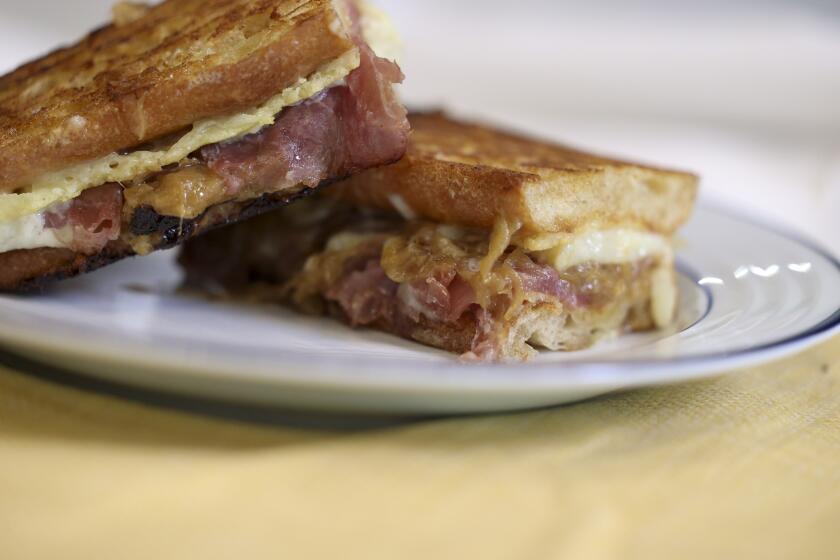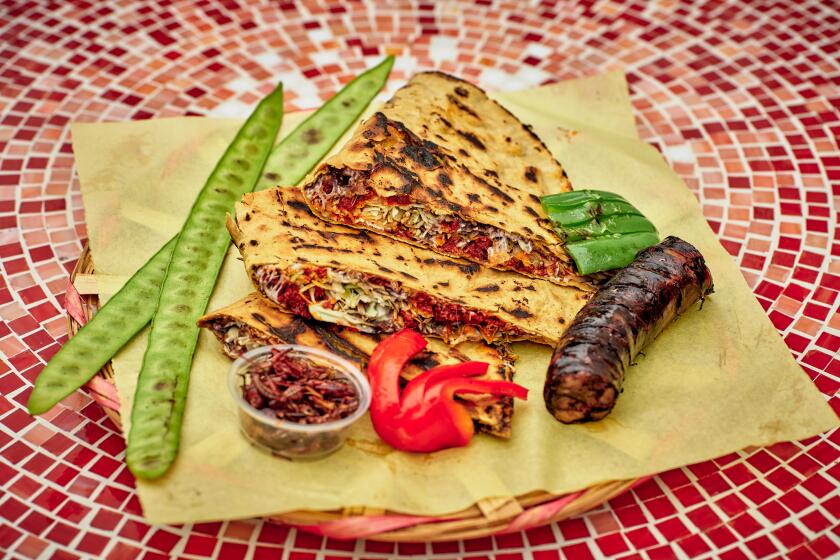Kids, put down those sodas
Was the American Beverage Assn. trying to defend sugary sodas when it said last week that they amounted to just 7% of the typical American’s caloric intake? The association may have thought that sounded like very little, but it’s actually a lot. For a person eating 2,000 calories a day — the level the federal government assumes in calculating nutritional requirements — consuming 7% fewer soda calories would theoretically lead to a loss of 14 pounds a year, with little if any loss of nutrients.
New research makes it clear that getting sugary drinks out of children’s diets isn’t just a theoretical good. In a pair of gold-standard studies — with hundreds of children and teenagers randomly assigned to drink a certain amount of soda or to abstain from it — those who drank sugar-sweetened beverages gained excess weight and had a higher body-mass index. And when overweight teenagers in the no-calorie group switched back to the higher-calorie versions, they gained weight.
In a finding with particular importance for California, the differences among Latino youngsters were even greater. Latino teens who started out overweight or obese and were assigned to calorie-free drinks were, within a year, 14 pounds lighter than similarly overweight teens who drank sugared drinks. That difference grew to 20 pounds in the second year of the study.
Soda, of course, isn’t the only high-calorie stuff we consume, and reducing consumption of sugared soft drinks isn’t necessarily the cure for obesity rates. But studies, including these, appear to indicate that when people drink their sugar calories, they don’t seem to feel as sated as with food, which means they eat full amounts in addition to drinking the sugary beverages.
Schools in California and many other states already have cracked down on sodas on campuses, but about a quarter of them haven’t. And even in many schools with soda bans, a recent survey found that students are downing sugary fruit juices and sports drinks that researchers say are just as much of a problem.
We’re not fans of interfering in people’s snack choices with restrictions or taxes. New York City’s ban on large servings of soda is intrusive — and probably will have little effect because people can still buy two smaller servings or super-gulp versions of other drinks that are even more caloric.
But schools and governments are under no obligation to abet the liquid sugar habit. They should refrain from selling sugary drinks, including juices that have more calories per cup than a Coke and little more nutrition, in their vending machines and cafeterias. Just as important, they should be telling students, families and employees about the reasons why. Despite what the soda trade group says, for many people 7% is clearly too much.
More to Read
Eat your way across L.A.
Get our weekly Tasting Notes newsletter for reviews, news and more.
You may occasionally receive promotional content from the Los Angeles Times.


![LOS ANGELES, CA - JUNE 17: [Cody Ma and Misha Sesar share a few dishes from their Persian Restaurant Azizam] on Monday, June 17, 2024 in Los Angeles, CA. (Ethan Benavidez / For The Times)](https://ca-times.brightspotcdn.com/dims4/default/7ffc7f6/2147483647/strip/true/crop/5110x3417+306+0/resize/320x214!/quality/75/?url=https%3A%2F%2Fcalifornia-times-brightspot.s3.amazonaws.com%2F79%2Fdc%2F4d29255545f5b9813315901692bc%2F1459972-fo-azizam-review20-eba.JPG)







